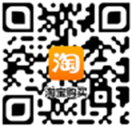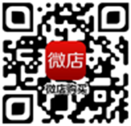1.Journal of Unmanned Undersea Systems academic misconduct detection methods and prevention guidelines
In addition to the editorial board's initial review and double-blind peer review, the journal also adopts academic misconduct detection software to assist the screening.Academic misconduct detection needs to be carried out twice, the first detection is carried out at the time of manuscript acceptance, and the second detection is carried out before the manuscript is published.
The detection software adopts the "Academic Misconduct Literature Detection System" (AMLC) of China Knowledge Network, which can realize the rapid detection of plagiarism and plagiarism, forgery, tampering and other academic misconduct. When the total text copy ratio of the manuscript is found to be more than 30%, the manuscript can be returned directly; when the total text copy ratio is between 20% and 30%, the manuscript will be returned directly if the important conclusion is plagiarized, and the relevant concepts will be repeated to inform the authors and require them to make modifications; when the total text copy ratio is lower than 10% and the citations have been correctly marked in the text, it will be regarded as acceptable.
Journal of Unmanned Undersea Systems follows the principle of first issue and only reports the results of original researches. Other non-academic journals (such as social media, popular science journals, or newspapers) should indicate the journal name, annual issue, page number, title, author, original website address, DOI number, and other information when forwarding our paper. To avoid taking out of context or unilaterally misinterpreting the original content, excerpts or compiled content must be approved by the author or this journal.
This journal firmly prohibits academic misconduct. During the publication process, manuscripts with evidence indicating academic misconduct will be rejected. If it is found that there is academic misconduct in a published paper, a statement revoking the publication of the paper will be published in this journal and its website, and the data of the paper in the relevant database will be deleted, the dissemination of the paper will be terminated, and adverse effects will be eliminated. At the same time, depending on the severity of the situation, the author of the article should be warned, or the author's unit should be notified, or relevant journals in the field should be notified.
In order to maintain academic ethics and ensure the academic reputation of the journal, all authors who submit to this journal are deemed to have recognized this convention and are subject to self-discipline in accordance with it.
2. Recognition of common academic misconduct
(1) Plagiarism
The act of using improper means to steal the opinions, data, images, research methods, written expressions, etc. of others and publishing them in one's own name. Mainly including the following aspects: 1) viewpoint plagiarism; 2) Data plagiarism; 3) Image and audio video plagiarism; 4) Research (experimental) method plagiarism; 5) Plagiarism in written expression; 6) Plagiarism of unpublished work by others.
(2) Forgery
The act of fabricating data or facts, including: 1) fabricating data, images, etc. that are not obtained through actual investigation or experimentations; 2) Fabricate research methods, conclusions, etc. that do not conform to reality; 3) Compile supporting materials, annotations, and references for the paper; 4) Compile funding sources for researches in the paper; 5) Compile reviewer information and review comments.
(3) Tampering
The act of intentionally modifying data and facts to make them lose their authenticity, including: 1) using original survey records, data, etc. that have been modified, selected, deleted, or added without authorization, to change the meaning of the original survey records, data, etc; 2) Splicing different images to construct unrealistic images; 3) Remove a part from the overall image or add some fictional parts to change the interpretation of the image; 4) Enhance, blur, and move specific parts of the image to change its interpretation; 5) Change the original meaning of the cited literature to benefit oneself.
(4) Improper signature
Attribution or author ranking behavior that does not match the actual contribution to the paper, manifested in the following forms: 1) individuals who have not made substantial contributions to the research of the paper sign their names in the paper; 2) Unauthorized inclusion of others on the author list without their consent; 3) The ranking of authors does not match their actual contributions to the paper; 4) Provide false information about the author's professional title, organization, educational background, research experience, etc.
(5) Multiple submissions for one draft
The act of submitting the same paper or multiple papers with only minor differences to two or more journals, or transferring them to other journals within the agreed period, including: 1) submitting the same paper to multiple journals at the same time; 2) Within the agreed response period for the first submission, resubmit the paper to another journal; 3) Submit the manuscript to another journal before receiving formal notification of rejection from the journal; 4) Submit multiple papers with only minor differences to multiple journals simultaneously; 5) Before receiving a response from the first submission journal or within the agreed period, make slight modifications to the paper and submit it to another journal; 6) Submit the published paper or make some minor modifications before resubmitting without any explanation.
(6) Repeated publication
The act of repeatedly publishing the content of one's own published literature without explanation, which may take the form of: 1) using the content of one's own published literature in a paper without citation or explanation; 2) Without any explanation, extract partial content from multiple published literature, splice it into a new paper, and publish it again; 3) The second publication allowed does not indicate the source of the first publication; 4) Repeated use of survey data in multiple papers without citation or explanation; 5) Publish papers that are essentially based on the same research, with a small amount of data or information added each time, and publish papers with similar methods, conclusions, etc. multiple times; 6) Collaborating authors publish papers with significantly similar data, methods, conclusions, etc. on the same survey, experiment, results, etc.
(7) Violation of research ethics
The research involved in the paper violates research ethical norms, such as disclosing the privacy of the subjects or respondents; Failure to explain the conflicts of interest in the study as required; Etc.
(8) Other academic misconduct
Other academic misconduct includes: 1) adding actual unreferenced literatures to references; 2) Mark citations from other literature as direct citations; 3) Unauthorized use of copyrighted literature that requires permission; 4) Entrusting a third-party institution or someone unrelated to the content of the paper to write, submit, or revise; 5) Publishing papers in violation of confidentiality regulations; Etc.










